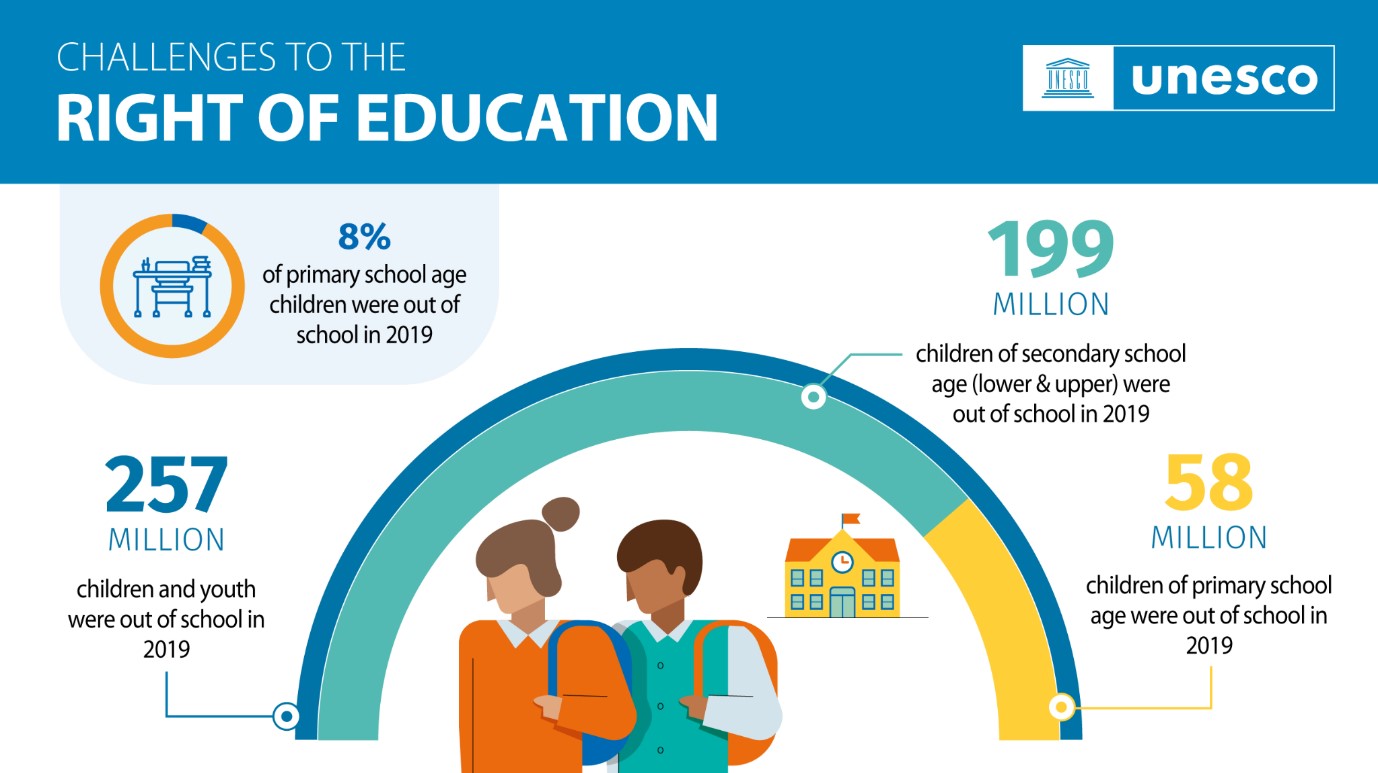
Achieving Educational Equity through Curriculum Transparency: A Comprehensive Guide
Recently, the education sector has witnessed a massive change one after another. Gone were the days where teaching was only possible through chalk and board, now thanks to digital revolution children can learn digitally and interact with teachers as well. The internet made all the education or any information accessible to every person those who are seeking them.
Every student has the rights to educate and below given alarming image from UNESCO, is stating everyone that why education needs to be available for everyone.

In recent years, we are witnessing that there’s a growing emphasis on curriculum transparency in education sector. Curriculum transparency simply means that it’s available to every student regarding of their abilities and background, it’s even applicable on every teacher as well.
Transparency in curriculum is the necessity which will make sure that everyone can get equal access to the curriculum which will make the learning environment fair and those educators who have pursued courses like MA in Education with Teaching Technology, they know it pretty well.
However, our blog will also help to wake education system up because in this blog we have covered, why we need curriculum transparency, it’s benefits and how it can get implemented within an education institute?
So, without any further delay, let’s get started.
What is Curriculum Transparency and why it’s important?
Curriculum transparency is the practice of making the content of a course or program of study available to students and teachers. This can come in many forms, such as making the syllabus or course plan available to students or parents, or creating online portals which allow teachers and students to track progress.
Curriculum transparency also means that all the quality education resources will be available to not just students but all educators as well. This means the access of digital libraries, digital textbooks and all curriculum related resources will be available to digital gadgets like smartphones and tablet.
Challenges Faced by School When It Comes to Curriculum Transparency
1. Lack of resources
Many school districts lack the necessary resources to implement curriculum transparency. This can include access to technology, training, and support.
2. Resistance to change
Some teachers and administrators may resist the implementation of curriculum transparency due to a fear of change or a lack of understanding of the benefits.
3. Time constraints
Teachers and administrators may feel that they do not have the time to implement curriculum transparency due to competing demands and priorities.
4. Access to technology is Limited
Some students and families may not have access to the necessary technology to fully participate in curriculum transparency initiatives.
What Impact Does Curriculum Transparency Have on Equity for Both Students and Teachers?
Curriculum Transparency can create a positive impact for both students and teachers. If all the high-quality education related resources be available to every student regardless to their abilities, background or circumstances will promote equity between every student, so that they can thrive in life.
It also ensures that all teachers have access to every necessary resource to teach their lessons.
Benefits of Implementing Curriculum Transparency for Students and Teachers
1.Improved student outcomes
Curriculum transparency ultimately will result in the improvement of overall outcomes of students academically, because of the availability of resources they can understand all the lessons easily.
2. Increased Teacher Effectiveness
Transparency in the curriculum can help teachers be more effective by giving them a clear understanding of what they need to teach and how they will be evaluated.
3. Increased collaboration
The more transparent the curriculum becomes, the more it will create the opportunity of collaboration between students, teachers and parents, which mill ultimately results in supportive and inclusive learning environment.
4. Growing student engagement
Curriculum transparency can give the sense of inclusion to students which will automatically increase the engagement of students.
5. Equity
With the help of Curriculum transparency all students can have access to same high quality educational resources and same applies for teachers as well, so that the environment of equity being maintained.
Implementation Of Curriculum Transparency is beneficial
Curriculum transparency is essential for ensuring that all students have equal access to high-quality education and that teachers have access to the necessary resources to deliver that education and those educators who have pursued courses like MA in Education with Teaching Technology knows it very well.
While there are challenges to implementing curriculum transparency, the benefits are significant. As technology continues to evolve, it is likely that it will play an increasingly important role in enhancing curriculum transparency. However, it is important to ensure that all stakeholders have access to the necessary resources to fully participate in these initiatives.

